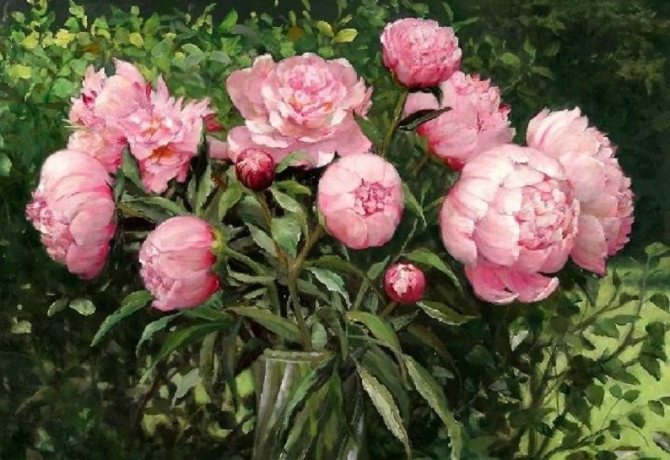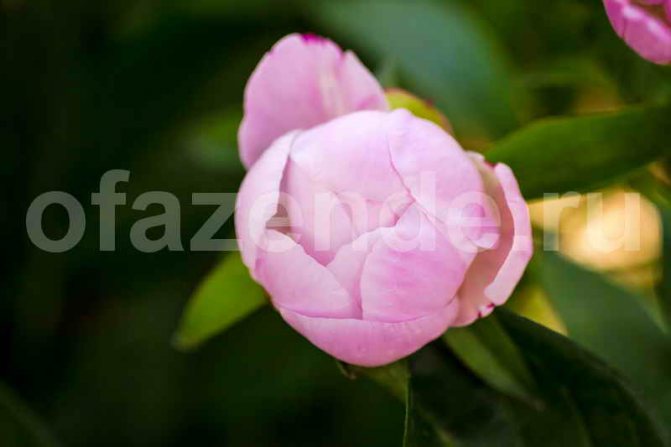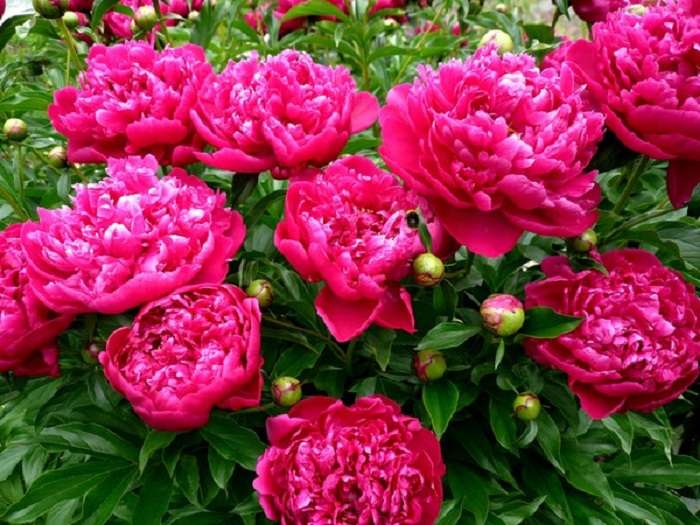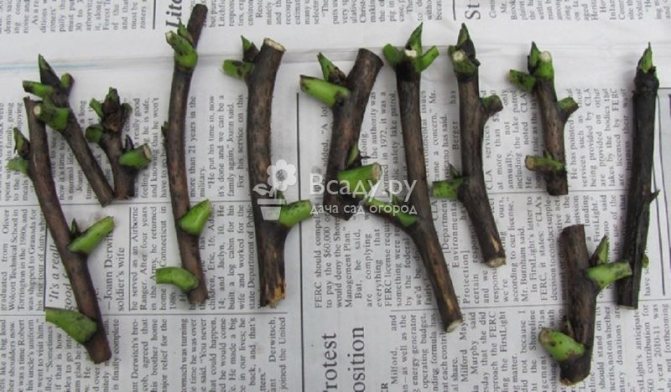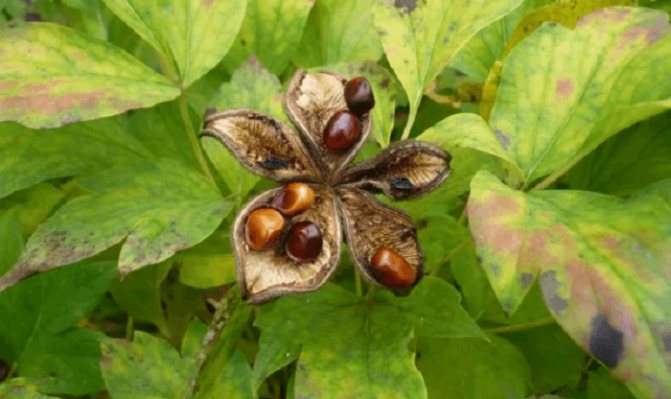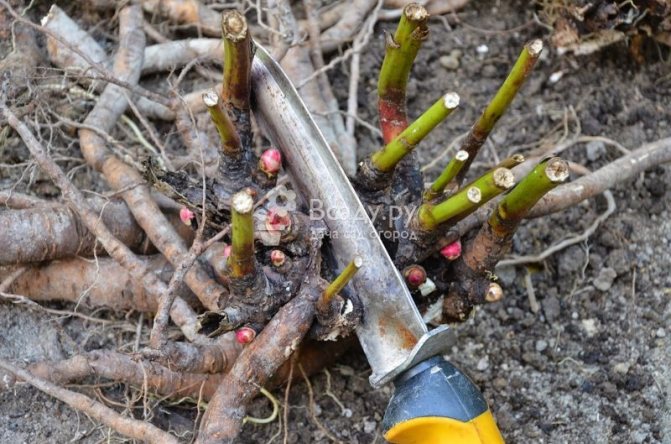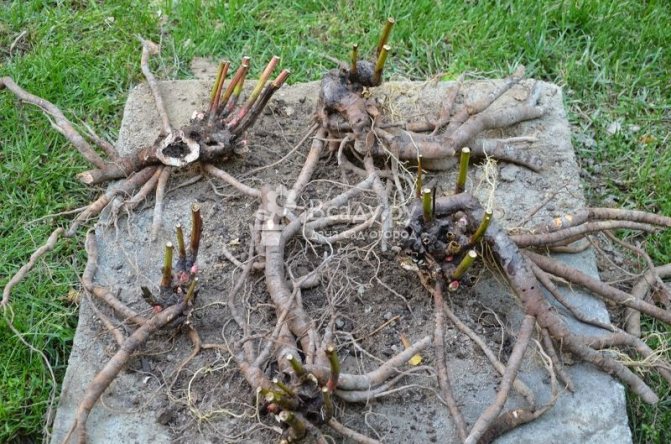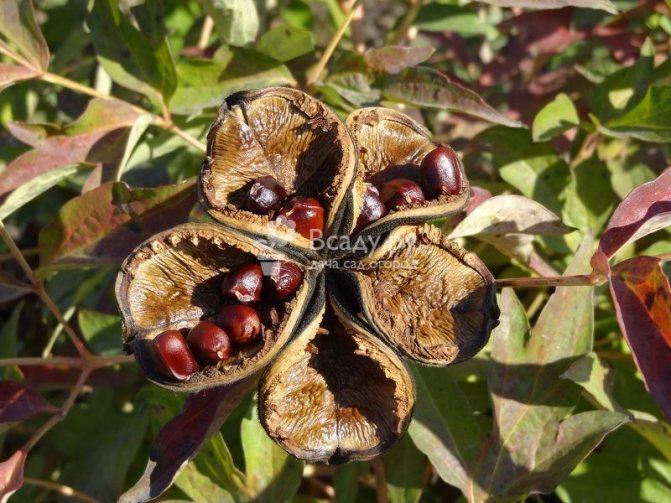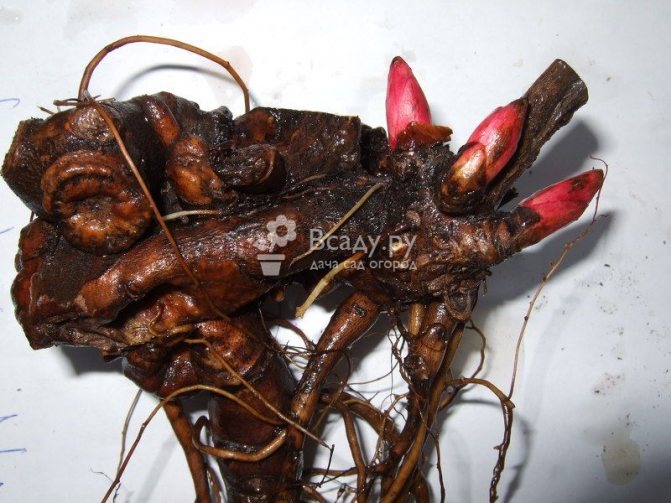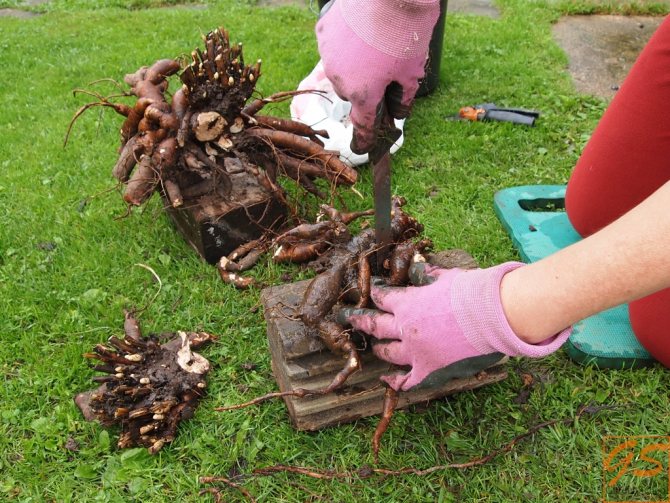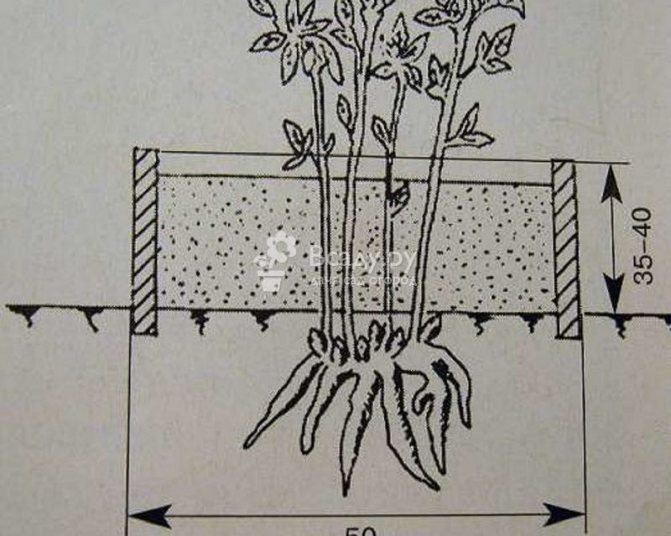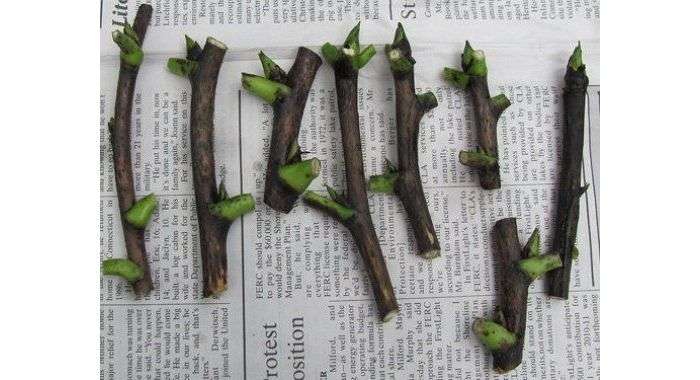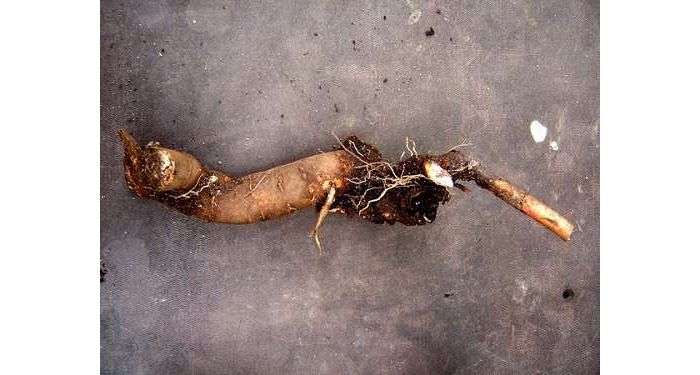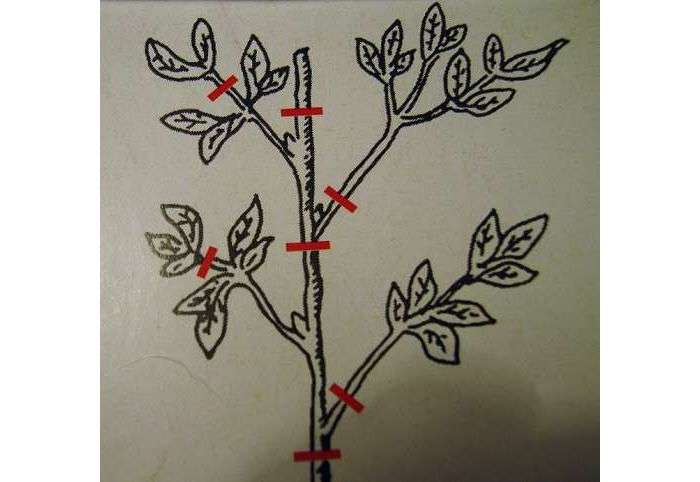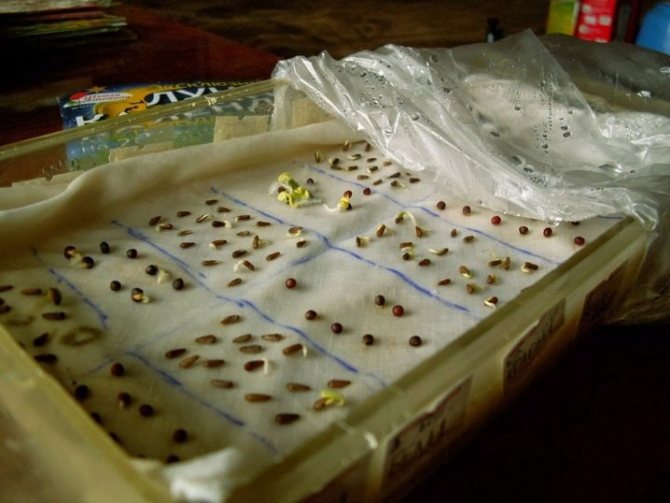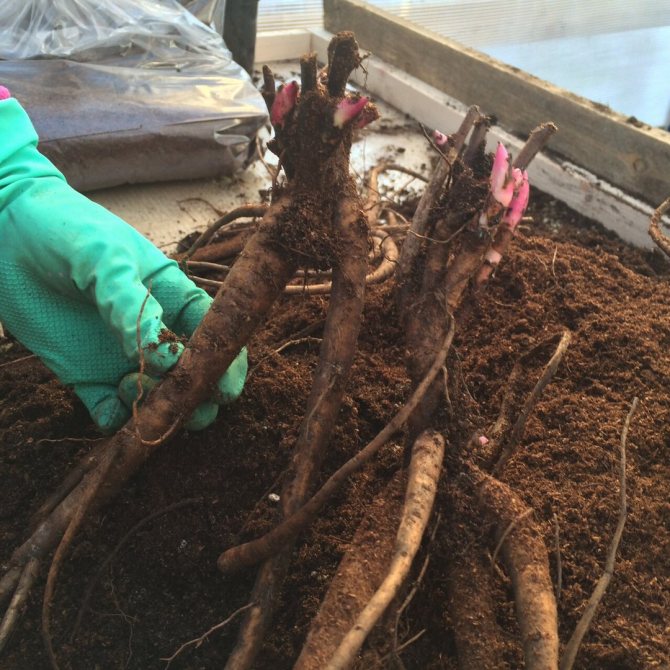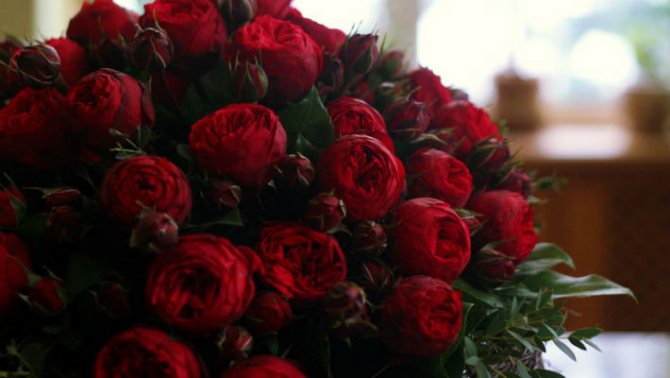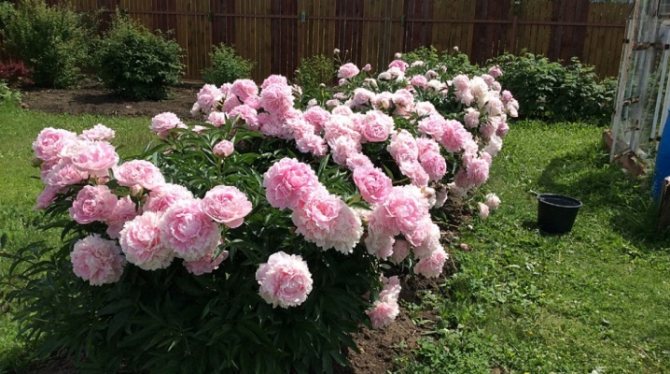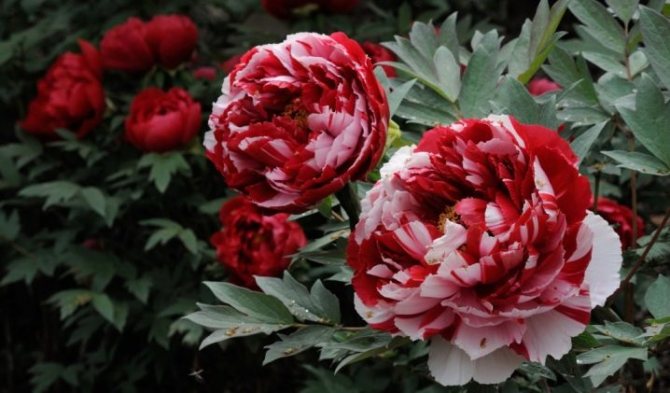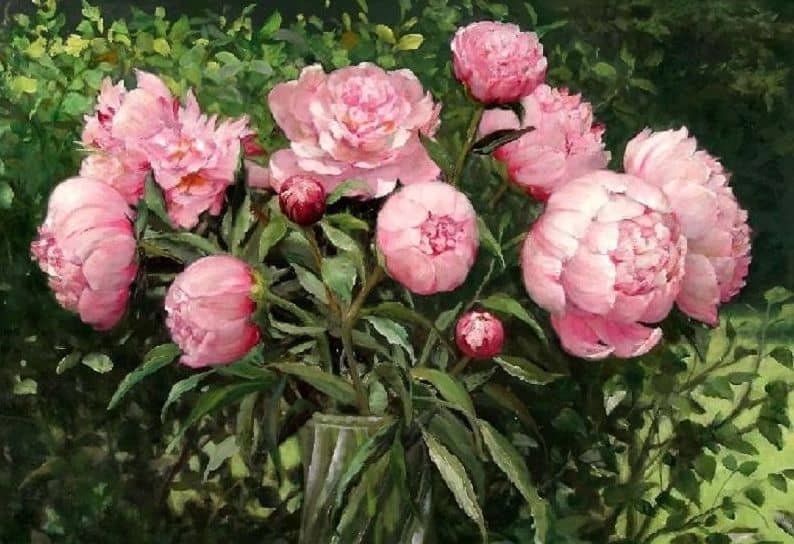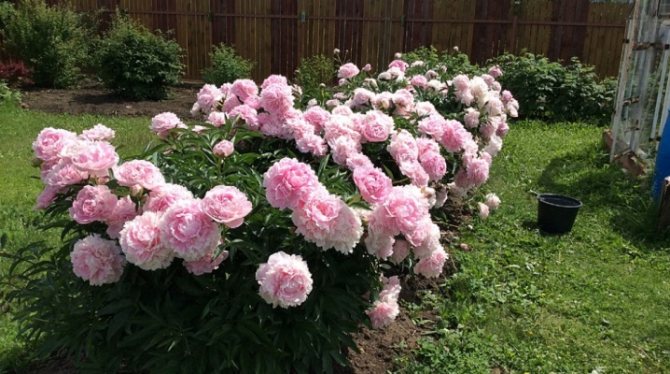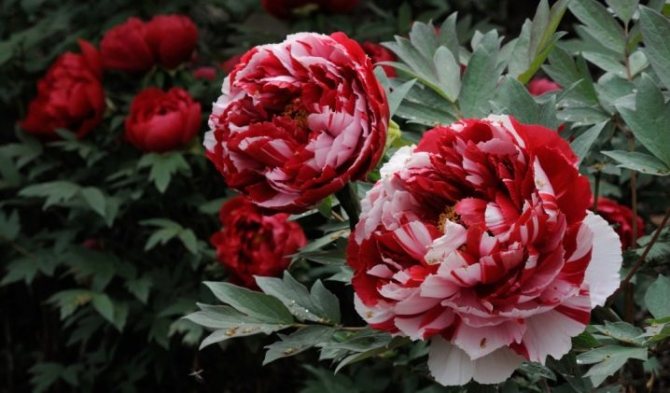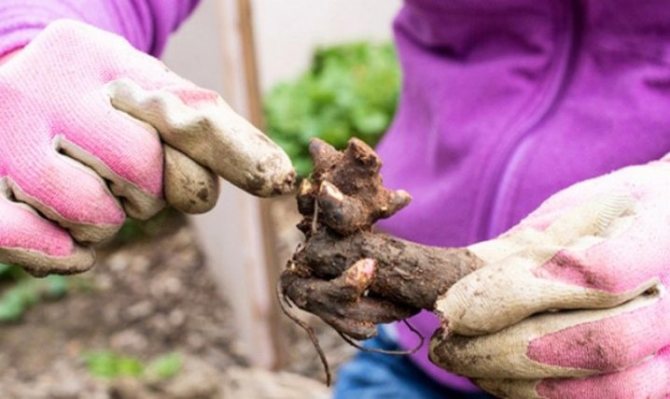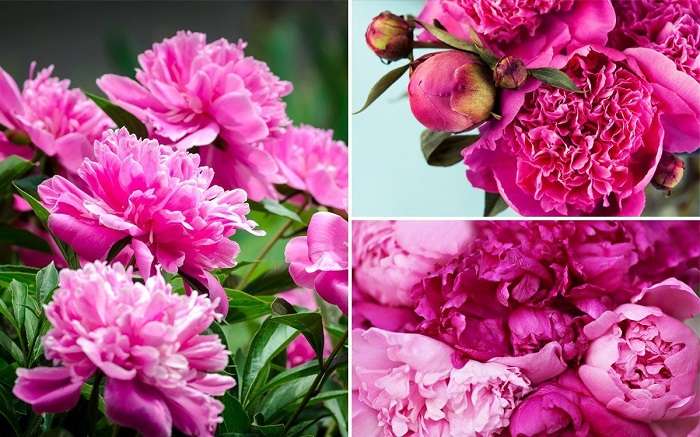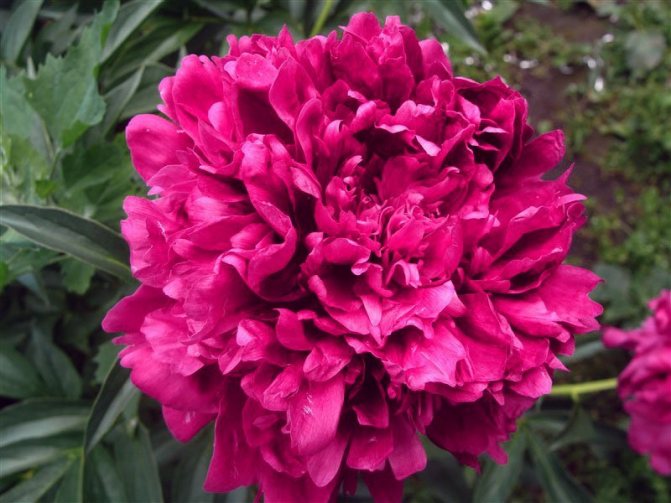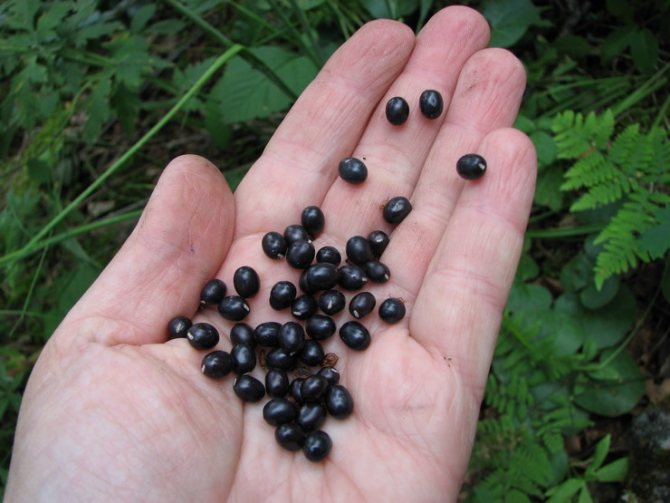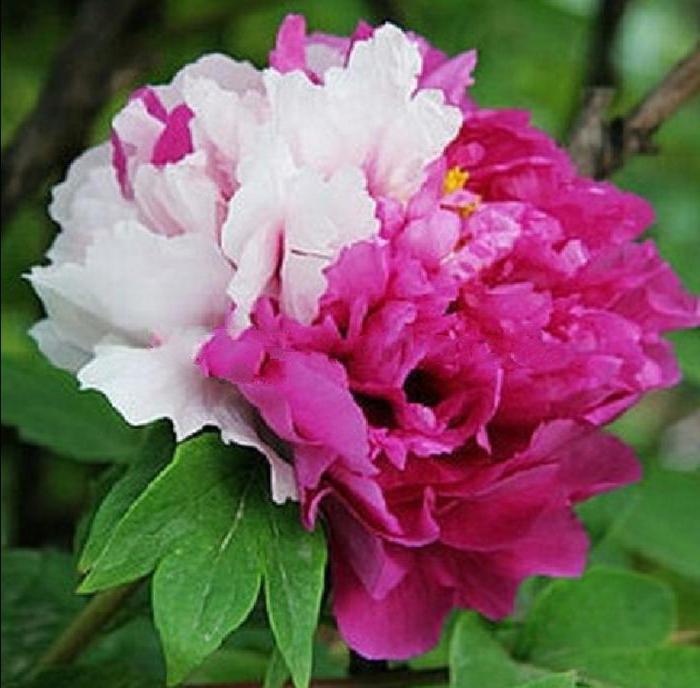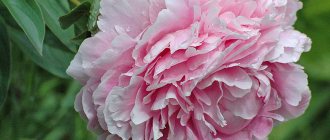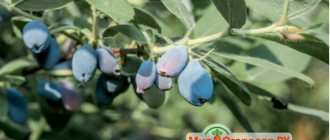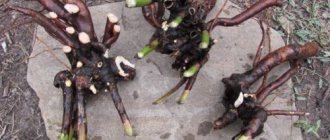Peonies are propagated vegetatively: stem and root cuttings, dividing the bush, renewal buds and layering. With seed reproduction, garden forms give a variety of unaligned offspring. In practice, peonies are most often propagated by dividing the bush.
Reproduction of peonies by dividing the bush
When starting a transplant, you should know that the best time for this is the end of August, when the air and soil temperature is no longer so high, and the plant sucking roots are still growing. Spring division is called possible, but undesirable, since the planting material, not having time to root properly, begins active growth of shoots, which can cause growth retardation and even plant death.
Note: It is also recommended to choose bushes for division that have reached the age of 5-7 years, since their rhizomes have already managed to accumulate a sufficient amount of nutrients necessary for the growth of young plants. As already mentioned, the best time to divide is the period from late August to mid-September, although this time period may increase until the first days of October, depending on weather conditions.
Having dug out the bush together with the rhizome, it is necessary to clean it of soil particles by washing them under water, and leave it in a cool place so that the roots wither a little and become more durable (Figure 1). The stems of the plant must be shortened 10-15 cm from the rhizome. Then they begin to search for a suitable planting material. The best option is a division with 3 or more buds, on which there is at least a pair of adventitious roots, 8-10 cm long.
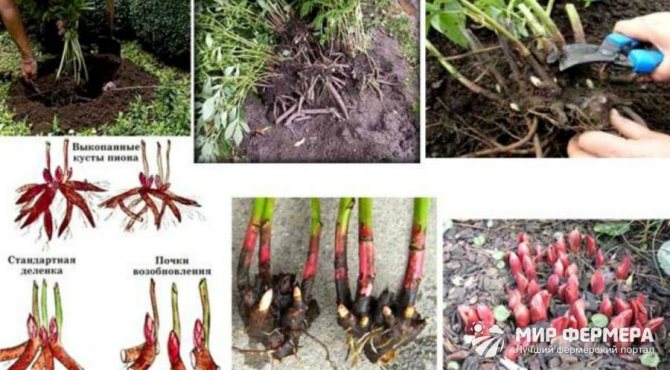
Figure 1. Features of reproduction by dividing the bush
Selected delenki must be washed again, cut out damaged, intertwined or upward adventitious roots, and disinfected in a weak solution of potassium permanganate for several hours. In addition, it is necessary to lubricate all the places from which unnecessary roots were removed with a mixture of clay and wood ash with the addition of a small amount of fungicide. The cuttings prepared in this way are planted in planting pits and care is carried out, which implies watering, feeding, loosening, as well as combating pests and diseases.
Bush division: video
If you are interested in how to propagate these flowers in spring, we recommend that you watch the video, which shows in detail all the details and features of this process.
https://youtu.be/YZ_I5JPFdWE
Pruning propagation
Reproduction of chrysanthemums
This method looks promising, but peony seedlings are constantly looked after. From a large bush, you can plant several dozen new plants in early spring and autumn. The old bush is restored after 2 years.
- In April, after the snow melts, or at the beginning of September, they clear the ground around the bush, exposing the root to a depth of 9-18 cm.
- A horizontal cut of the rhizome is made with a disinfected and sharp shovel, retreating from the level of the buds by 6 cm.
- The fragments are collected and processed for planting.
Important! Old tubers are sprinkled with wood ash and garden soil, mulched with sawdust.
Propagation of peonies by stem cuttings
Cultivation of a crop with stem cuttings is a rather laborious and ineffective method, since it is very difficult to ensure the optimum temperature and humidity of the air and soil. In addition, not all varieties can be grafted, for example, interspecific hybrids.
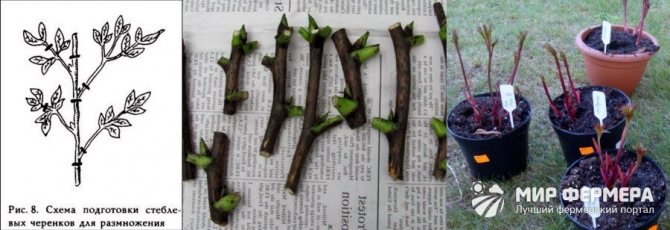

Figure 2. Stages of cultivation with stem cuttings
The highest percentage of seedlings rooting is achieved in June, a few weeks before the flowering of the shrub. To get a sprout, you need to take the middle part of the stem with three leaves, while the lower cut is made under the leaf, and the upper one - above the leaf (Figure 2). Then the lower leaves are removed, and the plate of the upper one is slightly shortened. The cut stems must be soaked in a solution of heteroauxin for 5-7 hours and planted in a greenhouse.
The cuttings take root after 1.5 months, and by autumn they develop a strong root system. For the winter, they are covered with organic mulch (peat, leaves) and polyethylene. In the spring, overwintered sprouts are planted in open ground, where they bloom for 3-4 years.
Stem cuttings: video
Despite the fact that grafting is considered an unpopular method, we will consider this process in more detail using the information from the video.
https://youtu.be/w-EQ9WJ0bqE
Reproduction by layering
For those gardeners who are interested in how to propagate peonies, a fairly easy method of cutting stems is suitable. The work begins in May, when full-fledged branches are formed at the peonies:
- A shallow groove is dug near the selected stems, where the branches are bent, leaving a few upper leaves above the ground.
- Sprinkle the stems with soil and watered.
- The area with layering around the mother bush is kept in order, weeds are removed and watered.
- Sprouts appear after a while, in summer. The soil near them is slightly loosened.
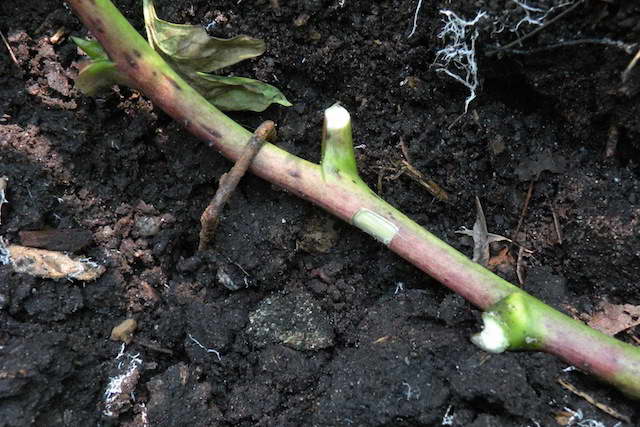

Reproduction by layering peony
Reproduction of phlox
At the end of August, the seedlings can be moved to a new place, covering them with mulch for the winter.
Important! When growing young peonies, they should not be allowed to bloom in the first 2 years of growth. The buds that have appeared are removed, otherwise the plants will weaken.
How to propagate a tree peony by cuttings
Breeding a tree variety with cuttings is the easiest way, however, not the most effective. Plants obtained in this way bloom only in the 5th year. The procedure is carried out throughout the summer, cutting off semi-lignified shoots with well-developed buds. In this case, the sections are carried out obliquely under the kidneys, and the places of the sections themselves are treated with growth stimulants for the fastest germination. The leaf blades should be shortened by 2/3 of their length (Figure 4).
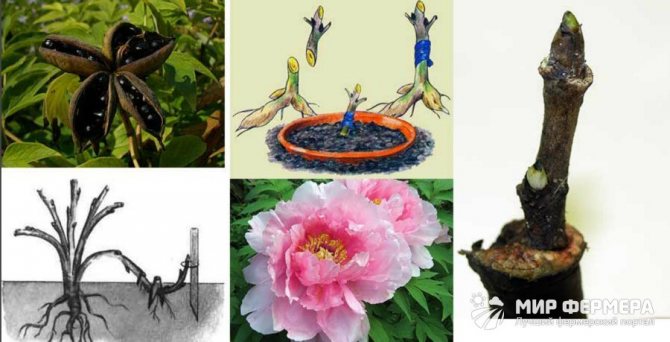

Figure 4. Stages of preparation of cuttings
Prepared cuttings are planted in a substrate of river sand and peat (1: 1) at an angle of 45 degrees. The surface of the substrate is covered with a small layer of sand to retain moisture. Containers with cuttings are placed under glass or foil, constantly maintaining the required moisture level. After rooting, the cuttings are planted in separate containers and kept in a greenhouse until spring. In the spring, they are planted in a permanent place in open ground.
Site preparation and planting of peonies
Peonies are unpretentious to the soil, the most suitable option is clean loamy soil. A closely spaced layer of groundwater is undesirable; in such cases, an artificial embankment with good drainage will be needed for cultivation. The place should be sunny or slightly shaded. The nearest neighbors should be several meters away from the planting.
A week before planting, pits for peonies should be prepared, cultivation from ready-made seedlings is carried out only in the fall - in September. The required size of the recesses: 60x60x60 cm, and the distance between them: 1 m. The bottom layer is filled with drainage from broken bricks (0.2 m). The next layer consists of compost and mineral fertilizers.
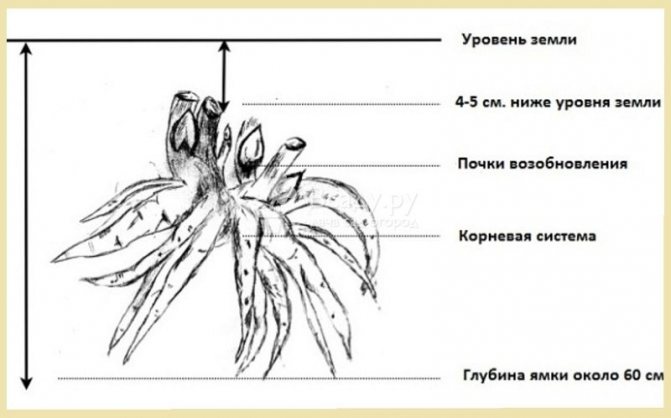

Peony planting scheme
A week later, when the soil settles, the seedlings are placed in planting holes and sprinkled with garden soil. In this case, vegetative buds should be no deeper than 5 cm from the surface. Deep-planted shrubs do not bloom.
Germinating seeds is a delicate matter
Gardeners resort to growing peonies from seeds at home for several reasons, sometimes related to the climate, and sometimes with a desire to bring the future appearance of flowers closer by six months or a year. This process is not too complicated, but very painstaking and requires adherence to the sequence of such stages:
- night soaking of seeds in a growth-stimulating liquid (you can take purchased preparations or an ordinary solution of potassium permanganate of a darkish purple color);
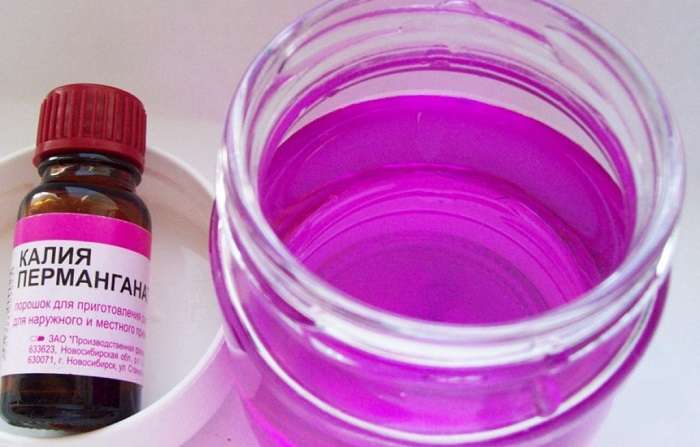

- soil preparation and subsequent moistening (2-centimeter soil layer, and then the same amount of sand);
- placing seeds on the soil.
At the same time, it is advisable to sprinkle them lightly with the same sand and carefully wrap them in a transparent film or tightly cover them with any other light-transmitting material. This is followed by the stage of the previously mentioned stratification, which in a certain way is a deception of nature, promotes accelerated germination of seeds and is carried out in accordance with two schemes.
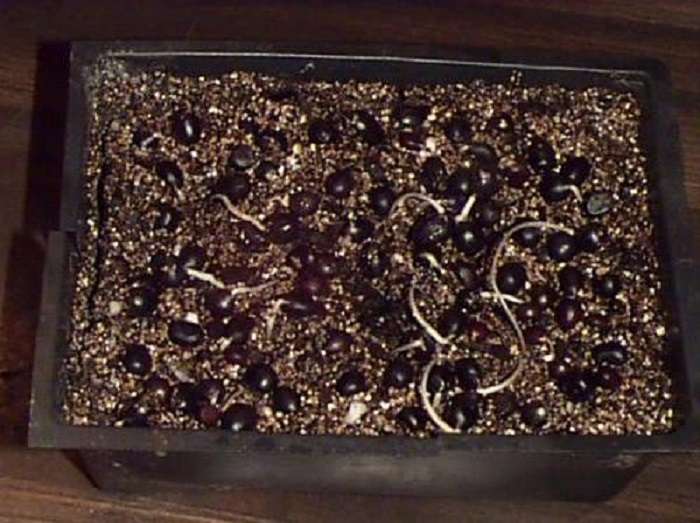

The most common option, when the process begins with a warm phase, is followed by a cold one, and then a warm one again (by the way, another method is based on the exact opposite sequence). More specifically, we talk about the first proposed method, then stratification begins with heating the seeds to 30 degrees Celsius during the day and reducing their temperature to 15 degrees at night. It is necessary to observe this regime by any available means for 1.5-2 months. At the same time, it is advisable to lightly spray the soil, which, if everything goes according to plan, after squeezing in a fist, should form a fairly dense lump. It is very important to expose the "subject of the experiment" to regular ventilation and provide it with sufficient light.
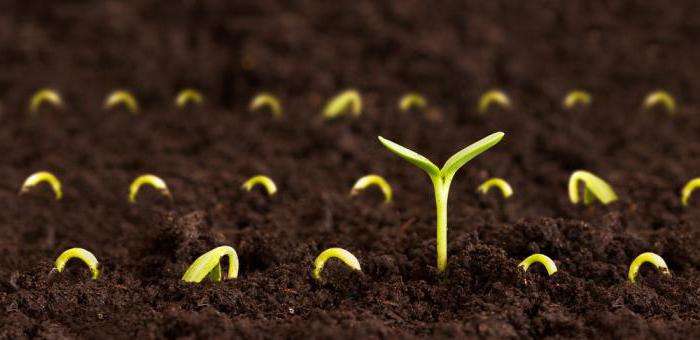

After about 2 months, the peony seeds will surely sprout and be ready to be immersed in fertile soil (taken from their native garden or bought in a store). As containers, you can use regular cups, which should be covered to create an optimal level of humidity. Well, you should remember about airing, infrequent spraying and, of course, about the temperature regime. It should be cold - 5-10 degrees Celsius. A successful result of stratification can be considered when the seeds are born with their first leaves.
Planting cuttings in the ground
Planting cuttings in the ground must be done correctly so that they are guaranteed to take root:
- choose a shady place. It is better to find a place under any shrub, where there will be no direct rays of the sun and there will be much more moisture in the soil than in an open space. The soil for the cuttings should be constantly moist, without drying out, which is why many people make mini greenhouses, which are preferable in a cool region, but in no way suitable where the summer is very hot: under the film or under bottles at more than 30 degrees, the cuttings will simply burn out. Therefore, in the summer, it is better to dig the cuttings under the bushes that give shade, but let the sunlight through (openwork shade).
- make a groove and spill it well with water
- we stick the cuttings into the ground grooves with a distance of at least 15 cm from each other, obliquely at 45 degrees or more, so that the lower sinuses with the lower leaf cut into a stump enter the ground, and the upper leaf and sinus remain above the soil surface (in the air)
- we compact the soil: we squeeze with our hands on all sides tight enough so that the soil adhesion to the cutting is 100%
- can be shed again so that the soil settles and compresses around the cuttings
- sprinkle a little earth (as if mulching the spilled soil), making sure that the upper sinus of the cutting remains not covered
- if there is a very strong heat, then you can cover it with a thin covering material from the scorching sun
Initially, in the sinus that is in the ground, callus will begin to form (growth of plant tissue as a result of the division of living cells closest to damage: in our case, these are grooves and a leaf cut into a stump) in the form of a white influx, from which white roots). Water as often as possible. Intensive root formation will begin somewhere in mid-August.
By autumn, a pink bud should have formed in the lower sinus of the cutting, which will indicate the complete survival rate and successful formation of a new plant from the cutting of a peony.
But, a new plant will need to be transplanted to a permanent place of residence only the next year in August.
Peony cuttings
Cutting peonies is a way of free reproduction of neighboring varieties: if you saw a beauty behind someone else's fence, ask for a twig. Moreover, a branch from a peony bush you like should be without a bud. It is not easy to choose this one, because for the most part each stem in the bush has a bud or a flower that has already blossomed, but you need just one that, in a given period of time, tries to put all its efforts not in the color, but in the growth of the branch.
The easiest way to do peony cuttings is when you cut the bush after flowering:
- remove all faded flowers
- cut off those leaves on which suspicious spots
- we make a formative pruning so that the bush turns out to be even (we form a ball)
- we shake off the flower petals that have fallen on them from all the leaves of the bush, so that in the future (during rains and cold snaps) diseases do not arise due to rotting "garbage". That is, we shake off the entire bush, as your hairdresser does after cutting your hair.
When pruning, we remove all the ugliness after the peonies have faded, making sure that in the remaining months of summer and autumn, the bushes are decorative with their foliage, which looks very good for them: green with carved leaves.
But after pruning, we select the stem that did not bloom. You can mark it in advance (before trimming) so that later it will not be confused with the trimmed ones.
How to make from one branch not only a beautiful peony, but also an expensive one (if you buy), several cuttings and grow new plants from them:
- The branch cut off from the bush must be cut into pieces so that two leaves remain on each cutting
- the lower cut of the cutting should be oblique and 2 cm below the sinus, where the lower leaf is. The pruner should be sharp to get a straight cut.
- the upper cut of the cutting should be 2-2.5 cm above the sheet and straight
- the bottom sheet must be cut into a 1 cm stump
- all green leaves must be cut in half, because a rootless stem (cutting) cannot simultaneously feed a large number of leaves and grow roots
Such reproduction of peonies by cuttings can only be done on herbaceous peonies: on tree-like ones, it will not work.
You can cut peonies in the spring, when the stems have already risen, leafed and even small buds the size of a couple of rice grains have appeared. During this period, there is a lot of vitality in the stem, little foliage. Spring cuttings must be cut using exactly the same technology as described above.
Seed method
The seed propagation method of peonies is used only by breeders, mainly for obtaining terry and elite varieties. This is due to the fact that it is characterized by a rather laborious process, since in such flowers the seed material in the capsules is tied in small quantities.
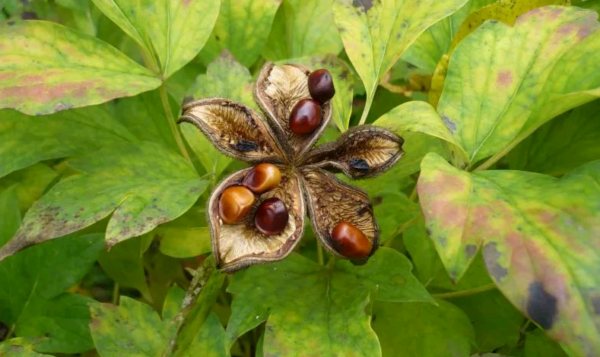

In addition, abundant flowering, when using this method, you need to wait a fairly long time (about 5-6 years). Also, this method does not guarantee the preservation of varietal traits in seedlings.
It is very important to use only fresh seeds for flower propagation.
Reproduction of peonies by seeds is also carried out in 2 ways, characterized by different conditions of execution. They are classified into:
- Seedless (that is, straight into the ground);
- Seedling.
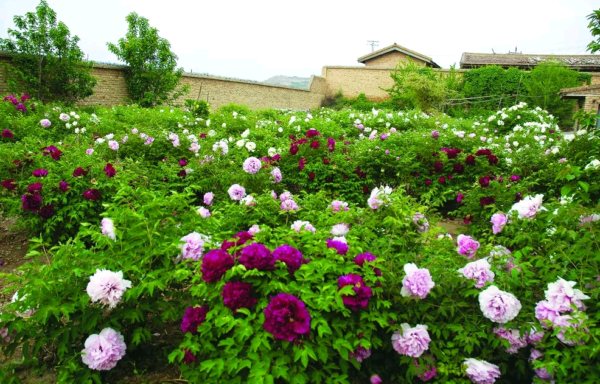

In the first method, the seed is sown at the end of summer in pre-prepared (i.e. well fertilized with humus) and moist soil. This is done for its natural stratification under the snow cover, which ensures the germination of the strongest and highest quality seedlings in spring.
In the second, the seeds are sown in special seedling pots, which are buried in the ground. In the summer, the grown seedlings are sorted, in which diseased and sluggish peonies are removed, while the rest are transplanted into the ground to a permanent place.
Features of the
Garden peonies are perennial herbaceous and shrub plants. Flowers of the Peony family are an excellent decorative living element that will fit favorably into the landscape of any site. You can grow them in your country house or in your own backyard.
- Peonies can reach a maximum height of 1 meter.
- The root system is quite massive, there are large pineal roots on it.
- Some representatives of this plant species have a pinnately-separated form, while others are trifoliate. They are characterized by dark gray, green and dark lilac color. The leaves of such plantings look very impressive.
- The inflorescences have a single arrangement. A large flower bowl can be up to 20 centimeters in diameter.
- Differs in unpretentious care, for which he is so fond of flower growers.
- Peonies can grow on the site for more than a dozen years.
- Flowers tolerate low temperatures well.
Using various methods of breeding peonies, breeders have bred many varieties and hybrids. There are about 5 thousand of them in the world. They all have individual differences..
This mainly affects the height of the plant, its shape, the size of the flower bowl, their color and the duration of flowering.
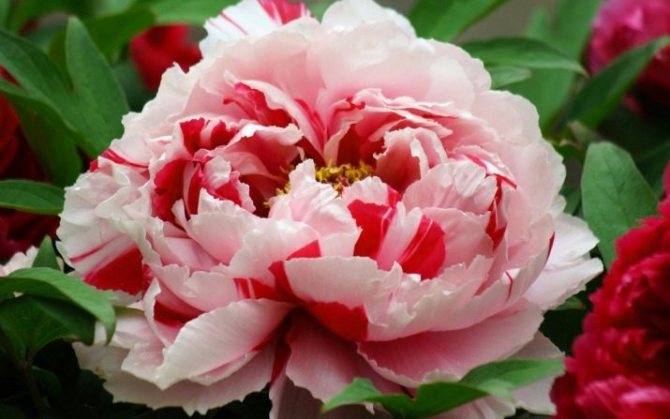

We take care of the seedlings correctly
After the planting material has "hatched", it is time to please it with warmth. The preferred temperature is about 20 degrees Celsius, watering should be observed regularly, and access to fresh air should be provided daily. In spring, seedlings can be taken outside, but regular exposure to sunlight is undesirable. The partial shade mode is the most optimal. At the same time, the distance between the shoots is quite important - preferably no more than 5 cm.
For many inexperienced gardeners who grow peonies from seeds, weeds sprouting from the soil are a problem. It is difficult to get rid of them, but ordinary sawdust will help to reduce their agility, a thin layer of which is sprinkled on the surface of the earth, which, by the way, helps to maintain its moisture. From time to time, you can resort to light loosening of the soil, thereby ensuring air circulation.
We must not forget about the prevention of possible germ diseases. For example, it is quite common when such a young plant is affected by an insidious gray mold. To prevent its appearance, regular spraying of plants with Bordeaux liquid of 0.1% concentration will help. It is easy to prepare it at home from ordinary water, lime and copper sulfate. An alternative to it can be a 0.2% foundationol solution.
In such conditions, plants should be stored throughout the spring-summer period, right up to August. Around the end of the last summer month, seedlings can confidently set off on their first trip to the open countryside. It's time to transplant young plants from cramped pots to their future place of residence, which should be:
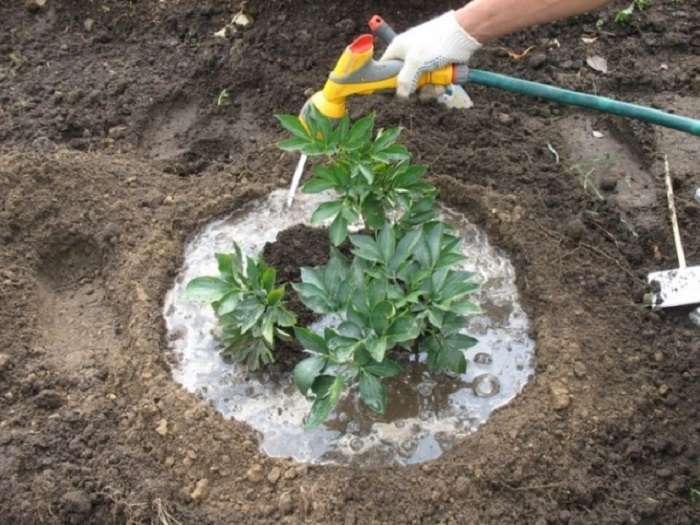

In order for peonies from seeds to successfully take root, you should observe the above conditions and remember that we are talking about a half-century plant that can really exist in a place comfortable for it for up to 50 years. It is extremely painstaking to treat the planting process, without freeing the roots, plunging the seedlings into the ground right with a piece of earth. Thus, the plant will not tolerate too painful a "move", and its root system will be able to quickly settle down in a new environment.
The hole should be carefully covered with earth and additionally processed by hand, eliminating the presence of voids, but at the same time experienced gardeners recommend paying close attention to the neck of the peony - the place where the roots go into the stem. It should be left open. It is important not to overflow the plant with water, but also try to avoid dryness. About 4-5 liters of water per bush will be sufficient.
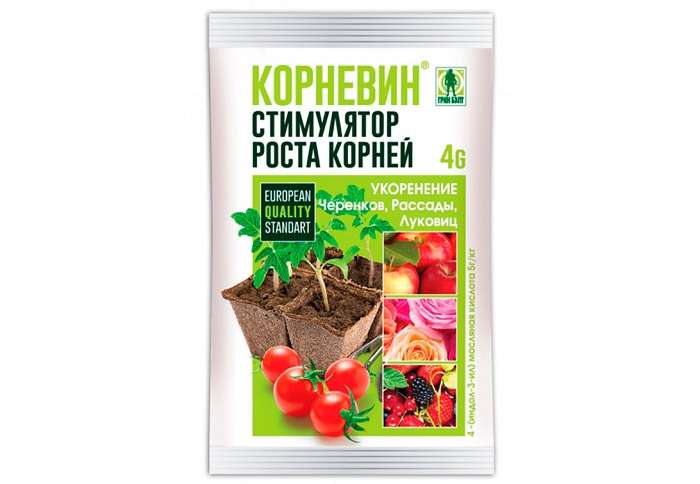

To accelerate the growth of peonies, biological products can be used - this is at the request of the owner. Since the matter is approaching the cold months, then the use of the same "Kornevin", or "Heteroauxin" will not be superfluous, because by the winter the planted handsome men should get stronger. In this case, they can easily survive both frost and snow without additional care and assistance. Also read our article "Growing a Peony in a Pot".
Vegetative method
The second method used when breeding peonies is vegetative. It includes several options for obtaining new plants, namely:
- With the help of layering;
- By means of root and stem cuttings of peonies;
- By dividing the bush.
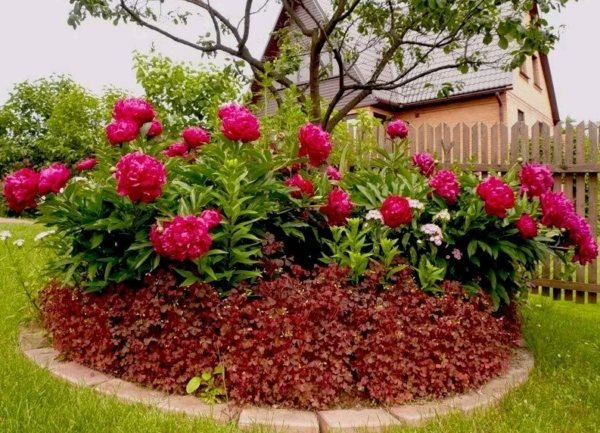

Each of these options, used in the vegetative propagation of peonies, is carried out subject to certain conditions, which will be discussed below.
Caring for peonies in the garden
From early spring, it is necessary to often water a peony, growing and caring for it implies the presence of moisture, but not an excess. For watering, use 2-3 buckets of water for an adult bush. Loosening and weeding are required.
Fertilizing peonies
Peonies are fed in 3 stages:
- as soon as the snow melted: 10 g of nitrogen and potassium are scattered around the bush and watered;
- during the budding period: 10 g of nitrogen, 12 g of potassium, 15 g of phosphorus (add in the same way);
- 2 weeks after flowering: 12 g of potassium, 20 g of phosphorus under 1 bush.
Diseases and pests of peonies
In early spring, peony bushes can be damaged by diseases such as gray rot (Latin Botrytis cinerea) and powdery mildew (Latin Oidium). Both for prophylaxis and for treatment - it is enough to treat the plants with soapy water or copper sulfate.
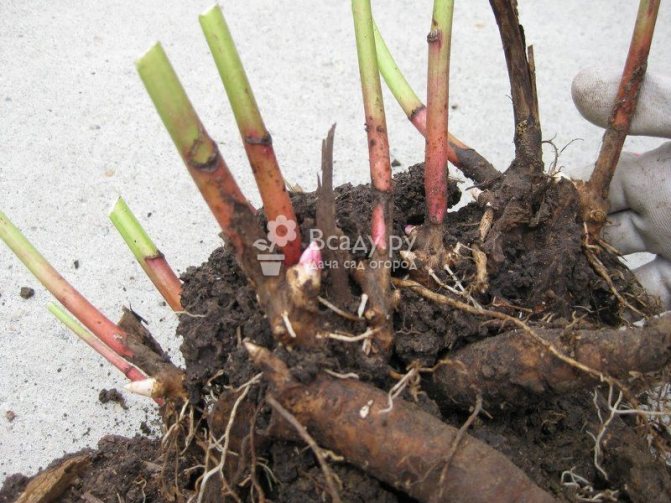

In the fall, the peony is completely cut off
Preparing a peony for wintering
After the autumn pruning, the bushes must be covered with a layer of peat mulch for the winter, especially the young and transplanted plants this year. Adult bushes are not afraid of frost, and easily endure winter.


